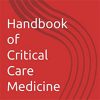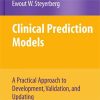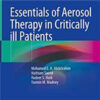Early EEG for outcome prediction of postanoxic coma
ccforum.biomedcentral.comWe recently showed that electroencephalography (EEG) patterns within the first 24 hours robustly contribute to multimodal prediction of poor or good neurological outcome of comatose patients after cardiac arrest. Here, we confirm these results and present a cost-minimization analysis. Early prognosis contributes to communication between doctors and family, and may prevent inappropriate treatment. A prospective cohort study including 430 subsequent comatose patients after cardiac arrest was conducted at intensive care units of two teaching hospitals. Continuous EEG was started within 12 hours after cardiac arrest and continued up to 3 days. EEG patterns were visually classified as unfavorable (isoelectric, low-voltage, or burst suppression with identical bursts) or favorable (continuous patterns) at 12 and 24 hours after cardiac arrest. Outcome at 6 months was classified as good (cerebral performance category (CPC) 1 or 2) or poor (CPC 3, 4, or 5).
Early EEG contributes to reliable prediction of good or poor outcome of postanoxic coma and may lead to reduced length of ICU stay. In turn, this may bring small cost reductions.

















